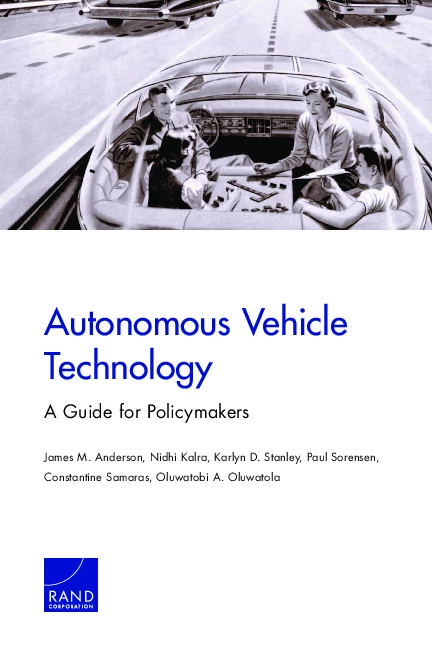Autonomous vehicle technology: A guide for policy makers
Add bookmark
- Level 0: The human driver is in complete control of all functions of the car.
- Level 1: One function is automated.
- Level 2: More than one function is automated at the same time (e.g., steering and acceleration), but the driver must remain constantly attentive.
- Level 3:The driving functions are sufficiently automated that the driver can safely engage in other activities.
- Level 4:The car can drive itself without a human driver.

Careful policymaking will be necessary to maximize the social benefits that this technology will enable, while minimizing the disadvantages. Yet policymakers are only beginning to think about the challenges and opportunities this technology poses.
[inlinead]
This report is to assist policymakers to make wise policy decisions in this rapidly evolving area and serves as a resource for companies looking to move into the autonomous vehicle space.
This comprehensive, 200-page report, courtesy of the RAND Transportation, Space, and Technology Program, explores legislative activity, cyber hacks, the role of telematics and communications, and liability implications, among many other topics surrounding autonomous cars.













